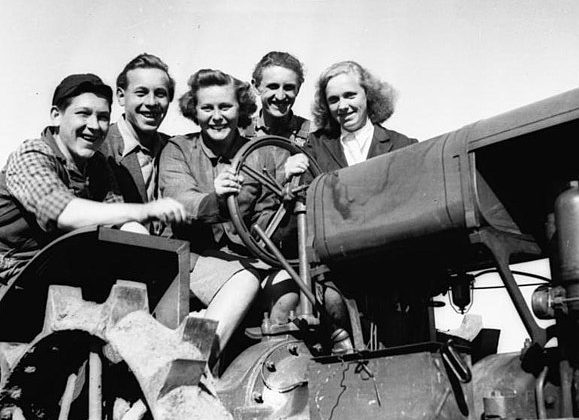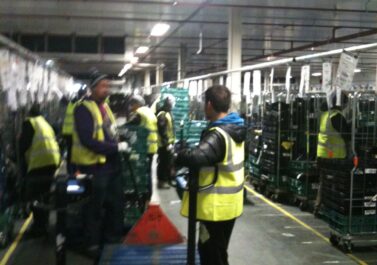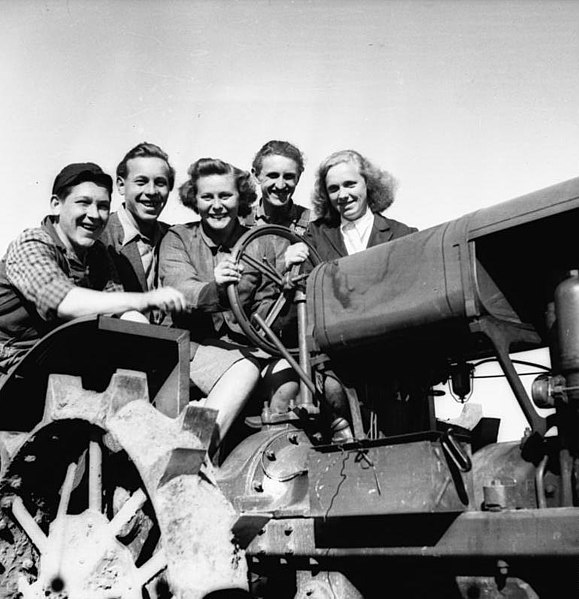
We are furious farmworkers. This text is the fourth inquiry from our forthcoming book: Farmworker fury – Inquiries about organic agriculture. Previous chapters can be found here, here and here. More chapters will follow soon.
In 2020, we read Class Power on Zero Hours by the AngryWorkers. It left us buzzing. After some time of not knowing what to do with our inspiration, we decided to write this book about our work experiences. Leftists often either romanticize (organic) agriculture, or they want it to be fully automated and industrialised. Beyond capitalism, we will have to learn to work the land in a truly sustainable way. Therefore, we think it’s important to have a workers-based analysis of (organic) agriculture. We are writing this book to contribute to such an analysis and we are hoping to receive feedback, comments and critiques from fellow workers and comrades.
For almost three months, we worked as farmhands on one of the biggest Community Supported Agriculture projects in Central Europe. We were very curious about this company as it presents itself as an important alternative to capitalism and seems to be organised very professionally.
About community-supported agriculture (CSA)
Community-supported agriculture (CSA), Teikei (in Japan), Solidarische Landwirtschaft (SoLaWi), Regionale Vertragslandwirtschaft (RVL), Agriculture Contractuelle de Proximitée (ACP), …
These names all refer to a similar core idea: financing a farm through a committed community of members and sharing the yield. This as an alternative to operating a farm as a commercial company which sells products to customers for profit. As its many different names show, CSA is a concept practiced in many different countries.
In CSA projects, members of the project commit to financing the costs of running the farm as a community one year in advance. This way, the entrepreneurial risks of failing harvests due to extreme weather, or loosing out in the market competition, is circumvented. CSA projects usually assess their expected costs a year in advance, and calculate the average costs per member. Those calculations are presented to their members in a general assembly. In many CSAs, not all members have to pay the same, they can anonymously decide what to pay in a bidding system. This way poorer members can be subsidised by rich people paying more for their share. In return for financing the total costs of operating the farm, the yield is shared among the members in the form of weekly vegetable boxes which are often delivered to pick-up points. Legally speaking, the produce is not bought or sold.
The idea of community-supported agriculture has gained a lot of ground in the past fifteen years in German-speaking Europe. [1] Some pioneer farms already started their community schemes in the late 1980s, but in 2010 there were still only circa a dozen projects scattered all over Germany. In Germany, the network for CSA projects currently counts 431 existing projects and more than 90 projects that are starting up (March 2023). [2] The Swiss network counts a few dozen projects and the Austrian network currently lists 58 CSA-farms. [3] Most CSA projects are small-scale vegetable farms: on average, we estimate most are about 1-2 hectares, supplying vegetable boxes for around 100-150 households, and employing one to six vegetable growers (We have not found any reliable comprehensive statistics on the actual average sizes of CSA farms).
Towards the public, many CSAs communicate a very high level of idealism on ecological and social aspects. CSA is the big and hip topic in the alternative-eco-hippie bubbles, and also, to some extent, in milieus that see themselves as climate (justice) movements. We have gotten to know many young leftie students with the urge to do something “useful and practical”, and “be closer to the land” who are drawn to CSA, as members or as volunteers. CSA brings many people in touch with agricultural work and, in our observation, some of them get so enthusiastic about it, that they train to become professional horticulturalists.
Why is CSA so appealing (in our limited view)?
– In stead of being customers, people can be members of an initiative.
– It offers planning security to the people operating the farm.
– It is a way in which customers can take on financial responsibility for part of their grocery supply. If the harvest fails, the members still have to pay.
– Many CSAs organise regular volunteer sessions in which members can help out on their farm and get a feeling for what growing food actually means.
– In some places, some members take on the chores of distributing the products or doing admin work, so the paid staff in a CSA can focus on the actual operation of the farm and on producing food. The time and money this sets free often opens a window to experiment with more ecological/idealist methods, or rare varieties.
(The above paragraphs are a rough sketch. The individual projects differ a lot from each other in all regards thinkable).
About the company
We were very curious about this company, as it is one of the biggest CSA projects in Central Europe, seems very professional, and presents itself as an important alternative to capitalism with slogans like: “We want to be pioneers of social and ecological change, creating an alternative to the current exploitative economic system.” and “We aim for common good not profit.” They communicate this to their members and the wider public via social media. Also, the board members regularly give interviews to journalists.
Within the CSA-scene, there are many people who believe that small-scale projects are the best way to organise and that any big project will end up being corrupted or being too hierarchical. We do not think this is true, and combined with our earlier, not so great experiences in a small CSA project in an eco village (see inquiry No. 1), we were very curious to see what a larger-scale version could look like.
On about 8 hectares, this company (which we will call “The CSA project”) cultivates vegetables for 2,900 households, most of whom live in two big cities each about 25 kilometres away from the farm. The members pay a yearly contribution and in return receive a vegetable box every week (apart from a few weeks during holidays). We worked there for about three months as seasonal workers in the Open field team, and in those weeks, we improved some working conditions together with our colleagues.
The company cultivates 37 hectares of land. 45 different varieties of vegetables are grown on 8 hectares, potatoes are grown on 3 hectares, 3700 m² are greenhouses. The remaining fields are grassland and grains. This seems a lot, as their main aim is to produce vegetables. The idea is to increase the vegetable production as they aim to increase their consumer-membership numbers by several thousand in the long run. Vegetables are far more labour intense than grassland and grains as they require a lot of manual work and efforts like irrigation, weeding, etc. The grassland was cut to use as mulch materials.
The vegetables are harvested and taken care of by the open field team and the greenhouse team. Sometimes, additional vegetables are bought from neighbouring farms to supplement the vegetable box. (We cannot say precisely how big the share of additional vegetables is, but it is important for us to mention that the CSA members are not yet self-sufficient with their CSA production.) Then, the vegetables are packed by the Packing team, and driven to pick-up points by the Drivers’ team. From there, they are distributed further by volunteers on bikes or picked up individually by members. There is also an Office team with people who do administration, social media, and other marketing work. The admin office worked from the big city or from home, so we only ‘met’ them through e-mails or via Microsoft Teams, an online virtual platform.
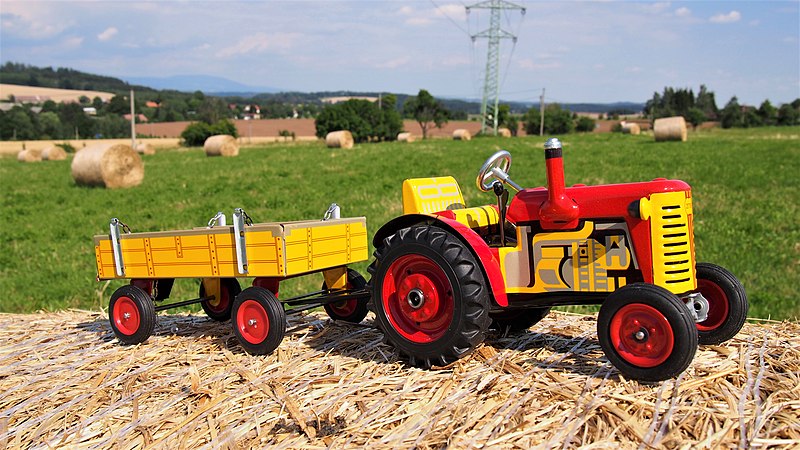
How much is the fish?
The CSA project has 2,900 members that finance the farm with their contribution. 580 members receive a small veggie box for a one-person-household , and 2,320 members receive a normal-sized veggie box (for a 2-3 people household).
Each member signs a cooperative share of €180. The annual contribution for the small box is €590. For the normal box it is €940. Each member can cancel the delivery for up to four weeks, for example if they go on holiday. There is no delivery from Christmas until New Years. So it comes down to 46 delivered veggie boxes per year per member. The small boxes cost €12.82 per box. For the normal boxes it is €20.43. Ultimately, however, members are not simply buying a vegetable box, they are financing a farm!
Thinking through those numbers further we can estimate the annual turnover of the cooperative: 580 members paying €590 per year, plus 2,320 members paying €940 per year sums up to an annual turnover of €2.5 million.
It is interesting to note that this business is legally a bit different to a normal capitalist company generating profit that goes into the owner’s private pockets. The constitution of the cooperative binds them to be a non-profit. However, as we will describe below, this legal arrangement did not reflect in the social dynamics and power relations within the company.
About the members
Each weekend, a group of CSA members came in to volunteer on the field. Depending on the day, this ranged from 5-30 people. The CSA members we met were of different ages, from in their 30s to pensioners. Almost all were white and most were middle and upper class, judging by the expensive cars we saw driving onto the farm. Often, there were a few kids around.
To us, it seemed like a lot of work to involve the members and find something easy enough for them to do, especially when they were not really committed. It did not seem to make a difference to our workload whether the members had been there at the weekend or not. In fact, having well-dressed and clean visitors from the city helping out for a few hours made us feel a bit like animals in a safari park. However, there was one member who committed to helping out in one of the teams for half a day a week, and that was very helpful, according to our colleagues in that team.
About the vegetable production
The vegetables are of good quality and certified organic. Unlike most CSAs, we think the company could compete on the free market. The company only uses plant-based nitrogen fertilisers. We heard from one of the team leaders that this was mainly the wish of the CSA members; his opinion was that it was too laborious to leave out animal fertilisers entirely.
Our work
The main thing we did in our ten weeks there was weeding and harvesting. We did lots of different kinds of weeding: Standing up, on all-fours, on the knees… We used different tools: Our bare hands, knives, a hoe or a hand spud. A few times we moved materials around, like plastic sheets or irrigation pipes.
Of course, we also harvested vegetables. The CSA project sends out two types of boxes each week, with almost the same content. So each week we harvested five to eight different vegetables in the same amounts every day. This allows for a more relaxed workflow, and makes the coordination of the harvest easier, in comparison to producing for sale on the market, where different orders come in every day and often last-minute.
Our first contact via e-mail and zoom made a good impression on us. Legally, everything was very well taken care of. We were officially employed, which meant we were insured and had paid days off. Also, the salary we earned was €3 an hour above the legal minimum wage at the time – not bad for farmhands. We did not have to argue about overtime and we got our money on time.
How we lived
During our stay at the company, we rented a room in one of the buildings on site. This cost us about €150 per month per person. We had a shared bathroom and kitchen. As employees, we got one vegetable box a week and a loaf of organic bread for free. Sometimes, there were leftover vegetables we could take. We often did not have to cook in the evening as we ate the leftovers from lunch. This was very convenient and it meant we did not spend much money on food. We paid €3.50 per lunch and we earned €1,600 net per month per person in a 40-hour week. This is €2,300 gross per month, which comes down to an hourly wage of €13.20 gross, and €9.20 net. Overall, we were employed for 2.5 months. Taking into account our holiday leave and compensation for overtime, we effectively worked 46 days in 10 weeks. After paying rent, food and other expenses, we had about €1,500 left per person upon leaving.
Organising the work and staff
The CSA project is legally organised as a registered cooperative. The “consumers” are legally the members of the cooperative; we will refer to them further as members. The farm and all its means of production are legally the property of those who eat the yield.
The everyday running of the CSA project is overseen by two members of a board of directors. They are elected by the CSA members in a full assembly. Being a member of the board of directors is a paid job for 32-hour week. On site there are two operational managers and five team leaders who are employees of the cooperative. They are not elected. The last word on applications lies with the board of directors. There is a supervisory board which is supposed to have a monitoring function over the board of directors. We only knew about it from the company website – it seems to consist of urban (upper) middle class people.
In total, the CSA project employs about 35 people, circa five of which are apprentices or interns. Almost none of the employees work full-time. Many have contracts for 32 hours a week (four days a week). There is a high turnover of staff – almost none of the workers had been there for longer than 18 months. There were two uni students who did an internship at the CSA project while we were there. They worked on the field or did odd jobs in the office and got €500 a month for this. They did not get a free vegetable box like other workers.
Hip management methods, bad work atmosphere
To set the context: we worked here in the middle of the high season. Everyone was making an hour overtime each day (which they got back as compensation time in winter) and it was blazing hot. When we arrived, the open field team was at least a few weeks behind on their weeding schedule, so everyone was very stressed. (A few weeks after the two of us started working here, we had caught up with the schedule, so basically the plan had been too ambitious for the number of people.)
From our first day on, we were surprised by the many hierarchies we had to work with. In our team of eleven people, the hierarchy was as follows: one operational manager, overseeing a team leader, overseeing a foreman, overseeing a “chief weeder”, overseeing the “untrained” workers, apprentices, and interns.
The work was also highly divided, with the most interesting roles going up in the hierarchy. Rank-and-filers like us did the most physical, monotonous jobs. Compared to our other work experiences, our work here was most repetitive and physically exhausting, as it was often the very same thing for a long time.
The company’s two operational managers spent about half of their time in the on-farm office. It was very unclear to the people on the field what they were actually doing in there.
Our colleagues in the open field team were very welcoming and friendly to us from the start. Still, we perceived the on-field reality as very different to the image portrayed to the outside. It surprised us that in those first weeks, conversations about the CSA were sometimes cynical and resigned. We worked without team leaders or forepeople in sight for more than half of the time, so there was a lot of time to talk openly without being worried about being overheard. In our first week, we heard the rumour that the two board directors were earning €5,000 a month (working 32 hours a week). We never found proof for this claim, however, the important bit to us is not the actual salary but that such rumours were going around in the first place, and that nobody really knew what the salary of the board members was. [4]
Of the two board directors, we only saw one on-field a few times, and that was only to give visitors a tour (once a group of school children, another time a delegation of peasant farmers from Asia). We did not see the other board member on the field in the time we were there, but s/he did work in the packing team a few times. The two board members worked from home or from the city office two days a week. The other two days a week, they were on site, and for that purpose the company rented a refitted sea-freight container. We wondered: “God knows how much money the company is paying for this container, which is too hot to sit in in summer and too cold in winter!” But it looked hip.
The image the board members like to present of the company is that of a hip eco start-up which cares about the environment and its workers. They use modern management methods like MbO (Management by Objectives), which is a way to set goals with a team and measure the outcomes, and is used at corporations like Google, Twitter, Linkedin, Mercedes and Opel.
MbO is criticised for various reasons. [5] First of all, many important factors in life and in work cannot be captured in objectives and measured. Secondly, setting aims increases the workload for workers as when an aim is achieved, it will be followed by an even more ambitious aim the following year. This increased pressure to achieve the agreed goals leads to an escalation of work hours, which contributes to a hollowing out and individualisation of collectively achieved working time regulations. MbO promises more freedom for workers to design their own work, but the leeway for real workers’ autonomy remains small. Often, workers have some freedom in how to implement the objectives, but the objectives themselves are set by higher management.
The two board directors, operational managers and team leaders of the company had bi-weekly MbO meetings. The outcomes of the meetings were not discussed with the workers, so we had no clue what happened there and which objectives were set (which, supposedly, we were then supposed to achieve). Apart from all the managers and team leaders not being there for half a day, we did not notice anything from these meetings, so they seemed completely useless to us. Once, we eavesdropped 15 minutes of a meeting: It was just one board member giving a monologue and sounded like managment-jargon bullshit bingo.
This is the only farm we ever worked for that uses the app Microsoft Teams! The board, managers and team leaders used it as their main communication channel, and of course it was them (and the office workers) who could be online most of the time. Most of us field workers only used Teams when there was no way around it. A few times we looked up some channels after work. When writing down our work hours in the online system, we wrote down generous extra hours for our time spent online. It took quite some time to get an overview of all the digital tools: on top of Teams, the company uses an online system to document work hours, and another platform for all sorts of lists, like onboarding documents. In fact, these well-structured documents helped us to get started at the company and to find out who to ask for what.
“Woke” image, no workers’ autonomy
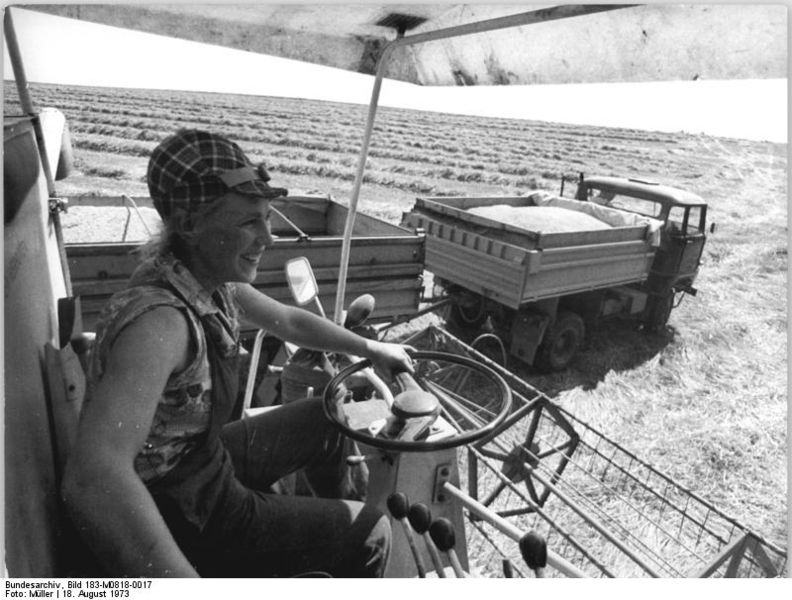
At the same time, we perceived a lot of discontent on the rank-and-file level about the lack of autonomy and how disorganized many things were for the field workers, despite the bosses talking about how efficient and innovative the company is. For example, there seemed to be some kind of tractor hierarchy. The official rule was that after being given an instruction, workers were allowed to use the corresponding machine or tractor. Many workers never received an instruction, even though they asked for it repeatedly. Having many workers around who cannot use certain machines/tractors is highly inefficient. Once, the tractor that workers on the field were allowed to drive was broken, and we constantly had to wait for one of the bosses or at least a foreperson to drive our harvest around with a different tractor. That one looked newer, more impressive and more expensive, and of course it was an easy conclusion to draw that the bosses simply did not want us, the workers, to use ‘their’ fancy machine. It made us very angry when, the next day, we saw one of the long-term CSA members happily taking his kids for a drive in the fancy tractor! Apparently everyone was allowed to use that tractor, apart from us workers.
In summer, our permanent colleagues had to do weekend shifts by themselves once in a while, because the courgettes (zucchinis) grow too fast to leave them unharvested from Friday until Monday. Some colleagues were not instructed to drive a tractor and, as none of the bosses seemed to find it necessary or urgent to show them, these colleagues had to transport hundreds of kilos of courgette with a wheelbarrow from the field about 100 meters to the cooling house. This back-breaking work in the summer heat was completely avoidable. It was also frustrating that none of the bosses admitted that they did not want us to drive certain machines, but pretended there was some sort of Higher Reason. To us, with working experiences on several other organic farms, this was complete bollocks.
The knives we had to work with for harvesting were blunt and we were not given any instructions on how to sharpen them. There were just a few sharpening stones going around which often got lost. For some reason, we didn’t all get our personal sharpening stones, and we were not taught how to use them. Neither was there a central spot to sharpen knives with an electric sharpener. Working with blunt knives is very exhausting and also leads to wrist pain and injuries. Three of our colleagues had trouble with permanent pains that were related to overstressed wrists. The two of us started sharpening knives and hoes, as we had learnt that in other places, and other colleagues took it on from us.
Three of our colleagues were recent immigrants and there was often no (proper) translation for them. One of the people up in the hierarchy spoke their language, but he didn’t translate. Our impression was that a lot of miscommunication occurred, mostly during the practical work, which ended up causing chaos and frustration amongst the field workers, even though it was the bosses that should have been dealing with this issue. The quick instructions we received from the operational manager and the foreman in the morning were often not translated, so our immigrant colleagues who did not speak the language often had no clue what we were doing that day.
We heard that about a year before we arrived, a colleague asked the board about electing union reps for the sector’s trade union. The board member replied that he would contact his lawyer about that request, which is hard not to see as a union busting threat.
Our workdays in this company felt different to our other work experiences. It was more exhausting, both physically as well as mentally. Our days were more tedious and monotonous. When we showed initiative, it was often met with a ‘No’ from the managers. This takes all the fun out of the work and makes you feel like the bosses want you to be a harvesting robot, not a human being of flesh and blood with ideas and needs.
Different weeding techniques are approriate for differents kinds of vegetables or in different stages, so sometimes it is done standing with a hoe, other times crawling through the field on all fours pulling out weeds by hand or with a small knife. It makes a difference to workers how this tedious work is organised. For example, for workers it is much better to organise the work so you can work on all-fours for two hours followed by two hours of standing work, instead of four hours in the same position. Also, it makes a huge different if the hoe suits the height of the worker or not and if the blades are blunt or sharp, if decent knee pads are available. And it makes a difference whether the most exhausting chores are moved to cloudy and rainy days or are carried out in the afternoon heat.
Atmosphere among workers
Despite our criticism of the company’s structure and hierarchy, we had a great time at this company. Our colleagues on the field were great, we had a lot of fun together and even hung out after work. We often worked unsupervised, and there was a big sense of unity. We also sang songs together on the field and changed the lyrics to fit our work (Joe Strummer: “I fought the weeds and the weeds won”).
The kitchen conflict
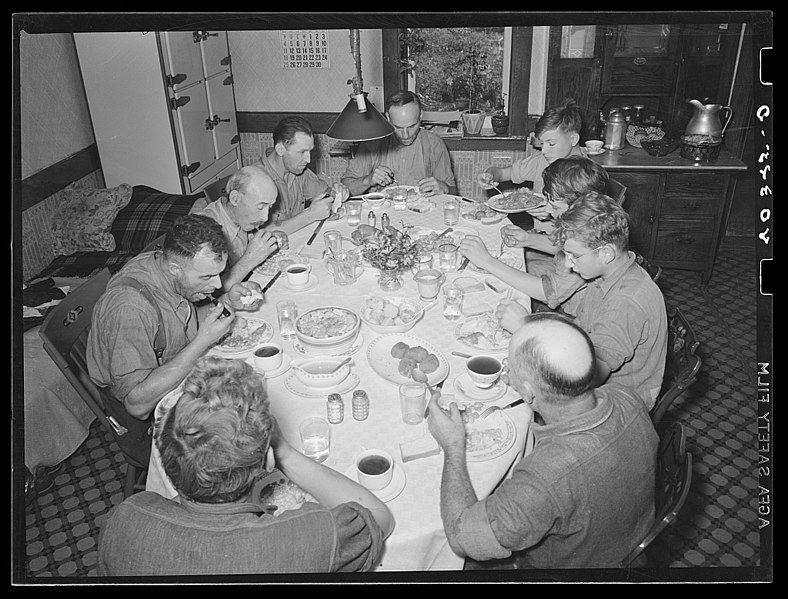
Usually, about 15-20 people ate lunch on farm. The kitchen was very improvised. For example, you couldn’t use the small electric stove (with only two burners!) and the oven at the same time as the kettle, or the fuse would blow out. The food was cooked from leftover vegetables from the farm, dry ingredients were ordered from a local organic wholesaler. There was a constant discussion between the cook and operational manager about the time she could start cooking, how long she could take, and about which ingredients to use, as the board found some items from the wholesaler too expensive.
To keep the money spent on lunch low, the board specifically asked the cook to use sorted out vegetables (those that grew funnily or have bad spots). Thinking about it from a waste reduction point of view, this is great. However, those veggies need more time to be properly processed, for example because the cook has to cut out bad bits, and because small carrots take longer to peel than normal-sized ones, etc. To us workers, it was plain obvious the cook needed more time to prepare the food, but the board saw it differently. One board member even calculated how long certain cooking activities should take. Our colleagues told us that the cook sometimes resorted to cooking pasta and tomato sauce, as cooking something more complex was too stressful. It became clear to us very quickly that this was also part of the reason why she was off sick.
The regular start of the day was at 8 a.m. (even in high summer) until 5 or 6 p.m., with a one-hour lunch break. In summer we mostly worked 9 or 8 hours. (9 hours meant we collected one hour of overtime. We got those hours back as compensation days; our permanent colleagues got a longer time off in winter as compensation.) Most of our colleagues commuted from the big cities and had to leave home around 6:40 a.m. to be back around 7:30 p.m. For them, it was a lot of extra effort having to cook an extra meal at the end of the day when we didn’t get a cooked lunch. It was especially annoying since having a shared meal was part of the working conditions we were promised upon application.
For our first week, we had to arrange our own food for lunch, and there still seemed no solution in sight. On our third day, one of us suggested they would be able to cook for everyone. But the operational managers were not convinced. They said that those two hours of cooking a day would then be missed on field. After one week of the workers getting very worked up about the food situation, and several workers talking to the operational managers individually, one of our colleagues went to the operational managers and said that they should come talk to us all together in the lunch break. We all sat there: the open ground team, greenhouse team, packing team – about 15 people. When the operational managers noticed how annoyed everyone was, the solution was very easily found: One of us could cook, as we had suggested previously. Interestingly, the two board directors (seemingly) never found out about this conflict.
The kitchen work
For seven out of ten weeks that we were working there, one of us was in the kitchen for about two hours a day. Officially, they had told me I should start at 11 a.m. to have exactly 1.5 hours for cooking, but I (carefully) took this quite freely and often left the field fifteen minutes early, when there was no boss or manager in sight. I needed time to get out of my dusty fieldwork clothes, wash my hands properly, and transport the food from the cold storage to the kitchen. This way I could start cooking at 11 a.m. and it was still very hard work to get everything done by 12:30 p.m. Sometimes, one other person would help me in the kitchen. Now that there were two of us from two different teams, the kitchen sometimes became a place where people came by for a quick chat
In the kitchen, we could share stories and observations about the company and the bosses while cooking. This information was important to get a better picture of the company and its social fabric.
The field workers start plotting…
At this meeting (including delicious pasta in a lovely garden), three of our colleagues were present, beside us. One person was on holidays, and we decided it made no sense to invite our colleagues who we did not have a common language with. (Though we tried our best to involve them, for example by asking them for their demands and wishes during work, telling them that we would present their demands too, and requesting translation and translation devices.) We started the after-work gathering by setting a few aims for the evening: preparing the team meeting, feeling more powerful together. Then we made a list of things we wanted to change in the company, and thought of small steps to slowly get there. For example: one long-term aim we set was to have healthier bodies and less injuries. The short-term steps to get there included having proper equipment to work with, for instance having one person in the team responsible for daily sharpening all the knives (an arrangement we knew from another company, which you can read about in inquiry 5).
Next, we picked a few of those steps to address in the team meeting and then we practiced with a role play, where some of us played the bosses and some of us the workers. By this time, it was late and we had already done a lot, but it was very powerful to practice and it all woke us up again. We agreed that we would not tell anyone about our secret meeting, and we picked a date for a next get-together.
The actual official open ground team meeting, two days later, felt like a huge success. We got a few of our demands granted, like having breaks during the morning meetings to translate for our migrant colleagues. During the meeting, our request for proper rain jackets for everyone was met with several excuses, one being that for tax reasons it is very hard to give people personal rain jackets (which, as we replied, many other companies we worked for seemed to have found a way around), and that the budget had already been overspent by thousands of euros.
Quite a few of our requests were replied to with “interesting, we will think about it”, like our idea with having a person responsible for sharpening the knives properly. We are not sure if or how these demands have been met.
After the team meeting, we had two more secret meetings to evaluate our previous meeting and to prepare for the next team meeting. Then, our ten weeks at this company were over again and we had to leave it up to our colleagues.
Some conclusions about organising potentials at this company
One major change we observed after the open ground team meeting was that the atmosphere improved. In the meeting, one of our colleagues mentioned (as she had practiced in our secret meeting) that she felt like one of the bosses did not even greet her. The boss replied that he had the same feeling about her. Having it said out loud released a lot of tension and almost instantly improved the atmosphere. Of course, it is worth discussing whether a good atmosphere between bosses and workers should even be strived for. On the one hand, in our day-to-day life and that of our colleagues it made a big difference. On the other hand, it can easily lead to a misleading sense of friendship between bosses and workers.
The open ground team we were working in was the biggest of the teams. We noticed it functioned as social power base. The changes we managed to get implemented in this team radiated to the other teams. One person from another team came to our secret after-work meetings. Her team did not even have team meetings – the excuse was that it is not necessary in a team of five, and that of course everyone in the team can always bring up topics, questions and suggestions directly to the team leader or the operational greenhouse manager. This meant that everyone had to approach the managers individually to ask for improvements or changes. In the same way, the kitchen conflict was contained for a long while and disguised as a topic only between the cook and the manager. After discussing it with colleagues at one of the secret meetings, she managed to convince her team leader to set a date for a team meeting.
We noticed that a weak spot of the company is their reputation. This could be used to pressure the bosses into improving working conditions. The company entirely relies on its 2,900 members. If a few hundred decide to leave all at once and ask to get their shares paid out, it would cause major economic problems. An approach to escalate the workers’ struggle at this place could therefore be to use the company’s marketing against them, and spread stories on social media about the gap between the marketing talk and the realities on the ground. Another option would be to write a letter directly to the members. Who knows what workers in the place come up with in future…
It was interesting to observe how the bosses see themselves. We think these observations might offer spots to attack in case the conflict escalates. One operational manager genuinely believed this CSA project was an anti-capitalist initiative. At the same time, the board members had expensive yuppie bikes and smart watches. One board member complained to us about how much she was working, how much unpaid overtime she is doing, and how hard it is to combine the work with having children. We could barely listen to this as two of our colleagues worked on the field full time while they were both living in a single room in a refugee centre with their entire families. Our refugee colleagues were officially and completely legally registered by the state and had fully legal work permits. The refugee centre was the accomodation they got allocated to by the bureaucracy until they would find something to rent on their own. They had the same working conditions as the other workers. One of them worked a 40 hour week, the other one a 32 hour week. With the 40 hour week it came to €2.500 gross salary per month. So as workers with permanent contracts they got €200 more than us seasonals. Their net salary must have been higher than ours, as they have families which gives them a lower tax rate.
For us and all the colleagues involved, our collective organising attempts were our first practical experiences with workplace organising. This shows how much there is to be done, as, for many people in today’s society, trade unionism or shop-floor solidarity are at best abstract ideas and at worst something for prejudiced white men only.
A few months after we left, our former colleagues told us that the cook quit her job. The bosses approached the open ground team to ask if they would take turns preparing the daily lunch, in stead of simply announcing there would be no lunch anymore. Suddenly, it was not an issue anymore to lose two hours of field work to the cooking. In this case, as well as with other small things, our former colleagues regard their working conditions as improved. The bosses are much more considerate and friendly and their relationship with the workers is better. At the same time, our former colleagues mention that their last team meeting was delayed by almost one month, for various reasons. Generally, they say that they will continue secretly organising as workers and that they believe they are able to improve some basic things as long as they do not challenge the power relations in the company. Finally they all got proper rain jackets.
Some of our former colleagues agree with our working class analysis of the boss-worker conflicts. Other colleagues disagree, and see the trouble coming from miscommunication between the different hierarchies.
The role of this company in revolutionary times
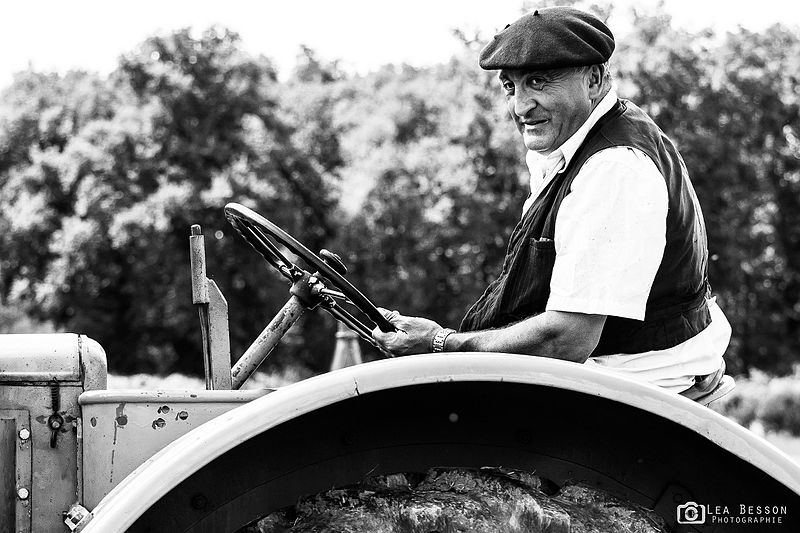
We are pretty sure that in revolutionary times, the bosses and managers of this company will try to pretend they are on the workers’ side, but at the same time will try to backstab us. They just love their (flimsy) position of power and the prestige it gives them in their woke social bubble. We definitely think they will not leave voluntarily, so how to set up a workers’ democracy remains an open question.
Workers’ power or consumers’ power? Some conclusions about CSA projects in general
Our main critique of the idea of community-supported agriculture is that the consumers are the members of the project and therefore the legal owners. There is nothing liberating about this from the perspective of the worker. Why should some middle-class professional from the city get to have a say about what fertilisers I use on the field?
Often, CSA projects are supported by members who help out on the farm, which enables people to “get in touch with the land”. Although we find this idea sympathetic, it raises questions about how to involve laypeople meaningfully. It is hard (but not impossible) for a professional company to find useful work for laypeople, especially when they do not have to make any commitments about when and how often they come.
If we lived nearby this CSA project and were not working in agriculture, we would definitely join this CSA. After all, the quality of the produce is great, the price is fair and working conditions are much better than at most other farms, at least to the eye of an informed working class subject. We would just not listen to all the bullshit about how growing food is going to make capitalism go away. Growing food is growing food, nothing more and nothing less.
Many urban leftist comrades often tell us that organic food is too expensive, so we want to give examples of the contents of the veggie boxes as they are delivered at this CSA project.
A random winter box at about €20:
200g of lamb’s lettuce
2 stalks of leek
500g beetroot
700g parsnip
2kg of potato
1 sugar loaf lettuce
Or a random summer box at about €20:
500g of tomato
1 bundle of radishes
1 fresh garlic
1 lettuce
3 courgettes
2 cucumbers
1kg of potato
500g of spinach
Especially in times of increasing costs of living, everybody can decide for themselves if this is too expensive for fresh, local, certified organic vegetables or not.
A year later, as we were doing the final editing for this book, we had a look at some vegatbles in our local ALDI to compare the prices. If you go for the cheapest option (conventional agriculture), a combination of more or less the same products costs about €8.33 at ALDI. With a few organic vegetables mixed in we got to €15.23. ALDI did not have all the vegetables we mention above available. Also, only tomatoes, zucchini and cucumber where available with a certified EU-organic label. And the countries of origin ALDI listed are Italy, Egypt, Netherlands, Spain, France and Germany. So it is hard to make an exact comparison, and on top of that, we think the products from the CSA are tastier, healthier and with a smaller environmental impact than the products from ALDI.
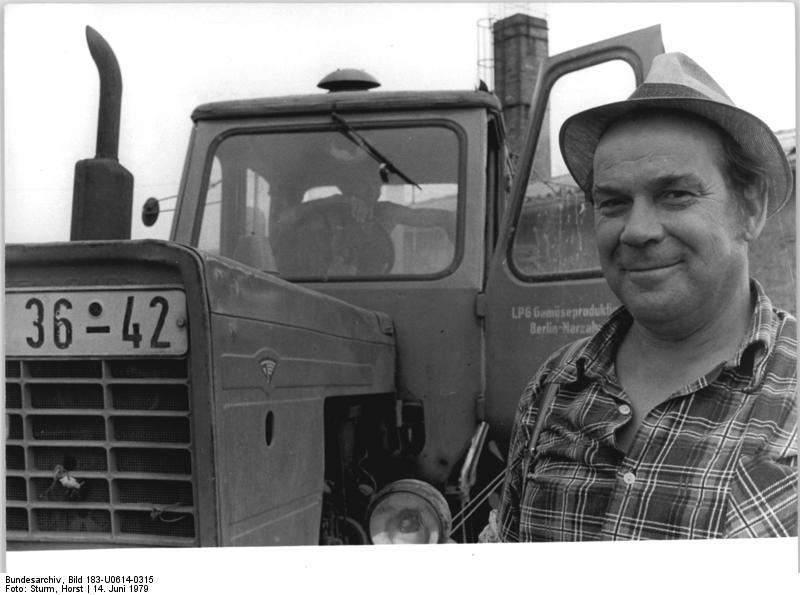
The problem we still have with this CSA project and many other “alternative” initiatives is that they “want to change the world” without considering or doing anything about class politics. From a furious farmworkers or workerist point of view, this is bound to fail, as it does not destroy capital and class. At the same time, we think CSA can be very useful as part of a working class movement. We just do not see the working class movement at the moment :-(. Similar to historical self-help projects of leftist working class movements like housing cooperatives, trade unions, consumer cooperatives or allotments, CSA can be a means to improve working class conditions by organising fresh, healthy, local, organic food at an affordable price. So we wrap it up by saying: “Down with CSA! Up with proletarian agriculture!”
This is the fourth published chapter from our forthcoming book. To be continued soon.
We are keen to hear your criticisms and to get to know fellow comrades in land- and farmwork, as well as a willing publisher and illustrator for the print version: farmworkerfury@riseup.net.
—–
Footnotes:
[1] We are curious to hear how this is in other parts of the world, as we do not know.
[2] https://www.solidarische-landwirtschaft.org/solawis-finden/auflistung/solawis and https://www.solidarische-landwirtschaft.org/solawis-finden/auflistung/solawis-in-gruendung
[3] https://solawi.life/solawi-in-oesterreich/ accessed 25th of Jan 2023
[4] Somehow the law obliges cooperatives to publish annual reports including the salary of the board members. But nobody we asked had the report available.
[5] The information on MbO in this and the following paragraph is from the book “Bewegt euch schneller – Zur Kritik moderner Managementmethoden”, Hermann Bueren, Kellner Verlag Bremen (2022).
